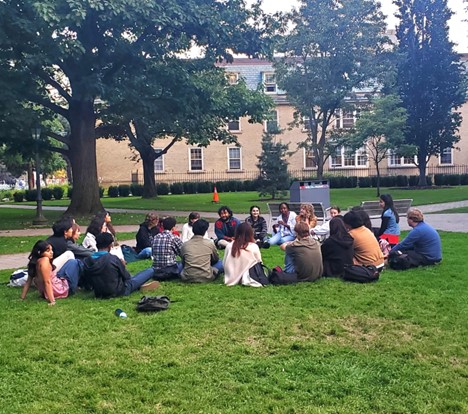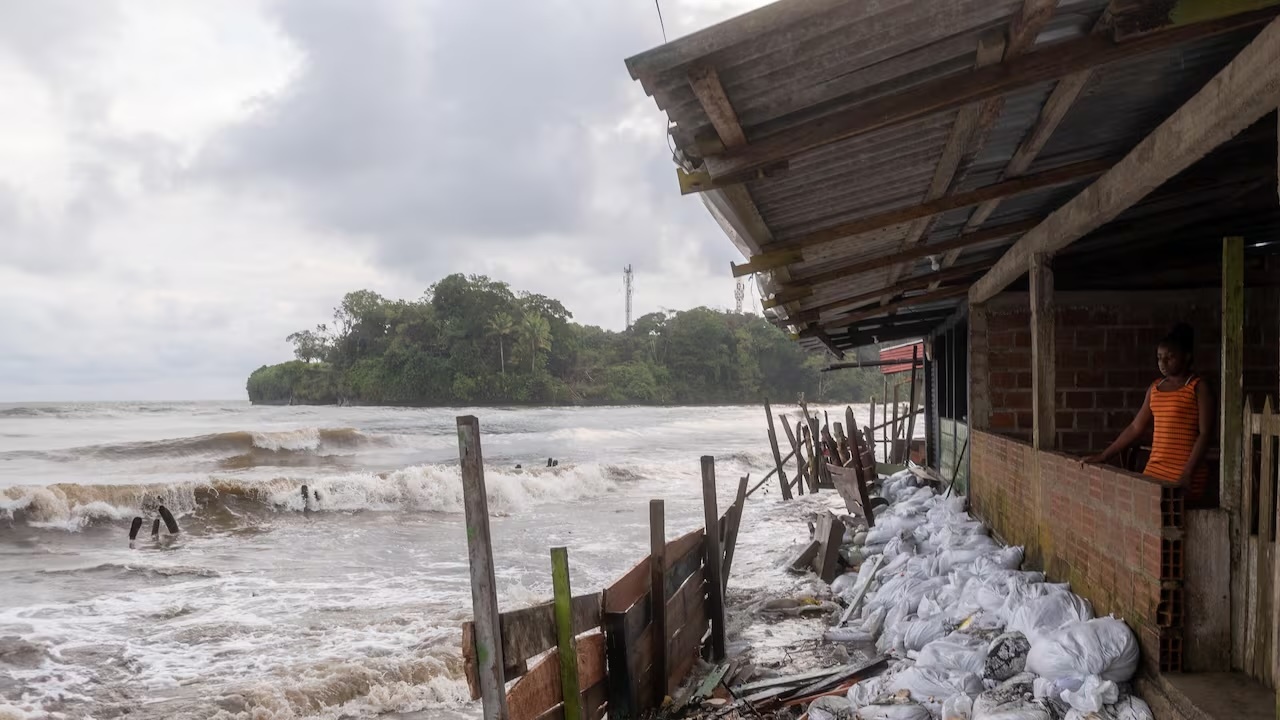PROTECT YOUR DNA WITH QUANTUM TECHNOLOGY
Orgo-Life the new way to the future Advertising by AdpathwayDuring a field day in May of 2023, I was out scouting for fossils and came across an interesting bit of skull in a horizontal rock face below a cliff of the Pliocene Purisima Formation. I immediately recognized it as some sort of cetacean - but at the time, I was unaware whether or not it was a mysticete (baleen whale) or an odontocete (toothed whale). Based on its relatively small size, I wondered if it wasn't from a beluga at first; I knew it wasn't from a dolphin with a less flattened snout, and it seemed too small to be from a baleen whale, even a dwarf one like Herpetocetus. I had, after all, recently discovered a braincase of Herpetocetus still in the cliff at a different locality, and figured my luck wasn't quite that good. Later that year, in August of 2023, I returned with a small crew to get the other specimen excavated - and knew full well that I did not have the time to get this other one excavated, especially if I didn't know what it was yet. So, I decided to wait until an ID was possible.
The unidentified cetacean rostrum as I discovered it on May 17, 2023, with my hammer black beauty for scale.
The rock at this locality erodes painfully slowly - I first visited the site when I was 19, and a medium-sized whale vertebrae measuring about 12" from the ventral side to the tip of the neural arch took until I was in my early to mid thirties to completely erode away, sometime between 2015 and 2019 - somewhere between 1 and 3/4 of an inch per year (roughly 20-25 mm per year). In some places I imagine that erosion is likely to be even slower, perhaps as slow as 1 cm per year (not counting cliff collapses). When I was 20, I found the posterior end of a humpback whale sized mandible sticking out of the cliff - likely going three meters into the rock, and utterly impossible to excavate, let alone safely - and it is still there - the posterior ~20 or 30 cm fell off sometime between now and 2004 (I should write a post about that, actually, if I can find the original photos I took twenty years ago). Matter of fact, the cliff face there was so filthy, I didn't successfully re-locate the mandible until a year ago. At that rate of erosion (15 cm per decade), it would take another 190 years to completely erode away!
The specimen as I found it in December 16, 2024, about eighteen months later. There is now a second part protruding from the cliff at the bottom of the photo. This is the "vertex" of the skull.
I checked up on the specimen again in August of 2023, and it looked largely the same. I did not visit the locality again until December of 2024, and at this point, there was a new bit of the skull exposed - and it very, very quickly told me exactly what type of whale it was: it was, in fact, another Herpetocetus! Herpetocetus is probably my favorite fossil baleen whale: it is a dwarf mysticete in the family Cetotheriidae - the true "cetotheres" - and was a highly ecologically specialized whale that could not open its mouth more than about 25 to 30 degrees, and appears to have been a suction feeder that fed a bit like a modern Gray whale (Eschrichtius robustus) by slurping in sand and silt filled with marine invertebrates like copepods and maybe even burrowing shrimp like Callianassa and Upogebia. I've excavated nearly a half dozen partial to nearly complete skulls of Herpetocetus, and have been working on and off on describing a large collection of new specimens of this strange little whale from similar localities in the Purisima Formation. No matter what I do, I just keep on stumbling across more and more fossils of Herpetocetus.
A closeup of the two regions of the exposed skull.
A side by side comparison of the newly exposed parts of the fossil and the skull of Herpetocetus morrowi. Photo by J. El Adli.
So, what tells me that this is Herpetocetus in particular? The rostrum bit is not terribly informative, unfortunately. The vertex, on the other hand, is the most diagnostic part of the skull - this is variably defined, but in general is the highest point of a cetacean skull - typically including where the tip of the occipital bone approaches the posterior ends of the bones of the rostrum; in other words, where the occipital, parietal, frontal, maxilla, and premaxilla crowd together. The way in which these bones meet is highly informative - and, can also change a bit during growth.
Firstly, the new fossil has a band of frontal, and a band of parietal, separating the posterior ends of the maxillae from the supraoccipital. This excludes it from being a balaenopterid (rorqual - e.g. blue/fin/minke), and a gray whale (Eschrichtiidae), as well as a right whale (Balaenidae). The specimen is very tiny - but wide open sutures at the vertex suggest that it's nowhere close to mature (but, still probably too mature to be a baby of any of the aforementioned mysticete groups). Some species of Herpetocetus, and juveniles of all, do have frontal and parietal at the vertex. One species I have studied extensively - Herpetocetus bramblei (from the Purisima Formation) - is unusually derived and the occipital bone and maxilla have met at the vertex, paralleling modern baleen whale species. On the other hand, Herpetocetus morrowi from the San Diego Formation (slightly younger than H. bramblei), has a wide band of both bones.
My second baleen whale discovery - the beautiful, as yet unpublished skull of Herpetocetus bramblei, from the Purisima Formation. I discovered and excavated this beauty in 2007 when I was 21 years old. Photo by C.-H. Tsai.
Secondly, there doesn't seem to be any premaxilla at the vertex - the maxillae meet at the midline - something unique to some cetotheriids. Thirdly, the vertex has a bit of an X-shape - the sutures between the occipital and parietal extend posterolaterally, and the maxilla-frontal suture extends anterolaterally - a classic feature of cetotheriids. Lastly, and perhaps most fundamentally, the specimen is really quite small - and I suspect it is probably a juvenile of Herpetocetus, perhaps 2/3 or 3/4 full size.
Comparison of the rostrum after 18 months of exposure without any intervention. Blue highlights newly exposed bone, and red highlights lost parts of the specimen.
I haven't left anything this significant out in the field long enough to document it over a timescale like this, so this was a nice experiment - I have outlined newly exposed parts in blue and lost bits of bone in red, on two photographs spaced exactly 18 months apart. If there is no further erosion, the specimen won't be any less informative, but it does need to get collected. A few fragments are gone, and a few more parts of the rostrum are freshly exposed. The vertex was so freshly exposed in December 2024 that no bone was missing yet. The rock is not particularly soft, though its' far from the hardest rock in the Purisima; it seems to have eroded (vertically) downward about 5 mm over about two years time. This actually makes sense, since it is on a flat platform of rock - the layer must be somewhat resistant to stick out from the cliff like this.
The specimen on March 29, 2025, just before I painted on quite a bit of paraloid glue and soaked the surrounding rock matrix in it.
I returned to the locality in March 2025 - the earliest I was able to safely walk to the spot - with a jar of consolidant glue, specifically a type called paraloid or B72 (Thanks to Washingtonian collector Bruce Thiel for mailing me some paraloid!). I used a pipette and soaked the exposed bone and the surrounding rock with a halo of paraloid with about a 10" radius outward from the bone. I've not been back to check on it since, and hope to check on it sometime in the fall. Fingers crossed that a bit of paraloid will help slow down further erosion of this specimen before it can be excavated! Now that it is identified, I know approximately how large it is, and there isn'y any overburden to speak of! It will just need to be trenched, jacketed, undercut, and flipped.





























 English (US) ·
English (US) ·  French (CA) ·
French (CA) ·